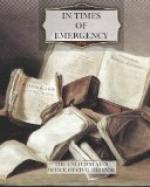INFANT SUPPLIES. Families with babies should keep on hand a two-week stock of infant supplies such as canned milk or baby formula, disposable diapers, bottles and nipples, rubber sheeting, blankets and baby clothing. Because water for washing might be limited, baby clothing and bedding should be stored in larger-than-normal quantities.
COOKING AND EATING UTENSILS. Emergency supplies should include pots, pans, knives, forks, spoons, plates, cups, napkins, paper towels, measuring cup, bottle opener, can opener, and pocket knife. If possible, disposable items should be stored. A heat source also might be helpful, such as an electric hot plate (for use if power is available), or a camp stove or canned-heat stove (in case power is shut off). However, if a stove is used indoors, adequate ventilation is needed.
CLOTHING. Several changes of clean clothing—especially undergarments and socks or stockings—should be ready for shelter use, in case water for washing should be scarce.
BEDDING. Blankets are the most important items of bedding that would be needed in a shelter, but occupants probably would be more comfortable if they also had available pillows, sheets, and air mattresses or sleeping bags.
FIRE FIGHTING EQUIPMENT. Simple fire fighting tools, and knowledge of how to use them, may be very useful. A hand-pumped fire extinguisher of the inexpensive, 5-gallon, water type is preferred. Carbon tetrachloride and other vaporizing-liquid type extinguishers are not recommended for use in small enclosed spaces, because of the danger of fumes. Other useful fire equipment for home use includes buckets filled with sand, a ladder, and a garden hose.
GENERAL EQUIPMENT AND TOOLS. The essential items in this category are a battery-powered radio and a flashlight or lantern, with spare batteries. The radio might be your only link with the outside world, and you might have to depend on it for all your information and instructions, especially for advice on when to leave shelter.
Other useful items: a shovel, broom, axe, crowbar, kerosene lantern, short rubber hose for siphoning, coil of half-inch rope at least 25 feet long, coil of wire, hammer, pliers, screwdriver, wrench, nails and screws.
MISCELLANEOUS ITEMS. In addition to such practical items as matches, candles, and civil defense instructions, some personal convenience items could be brought into the home shelter if space permits. These might include books and magazines, writing materials, a clock and calendar, playing cards and hobby materials, a sewing kit, and toiletries such as toothbrushes, cosmetics, and shaving supplies.
* * * * *
CHAPTER 7
WATER, FOOD, AND SANITATION IN A SHELTER
SUMMARY
BEFORE AN EMERGENCY




